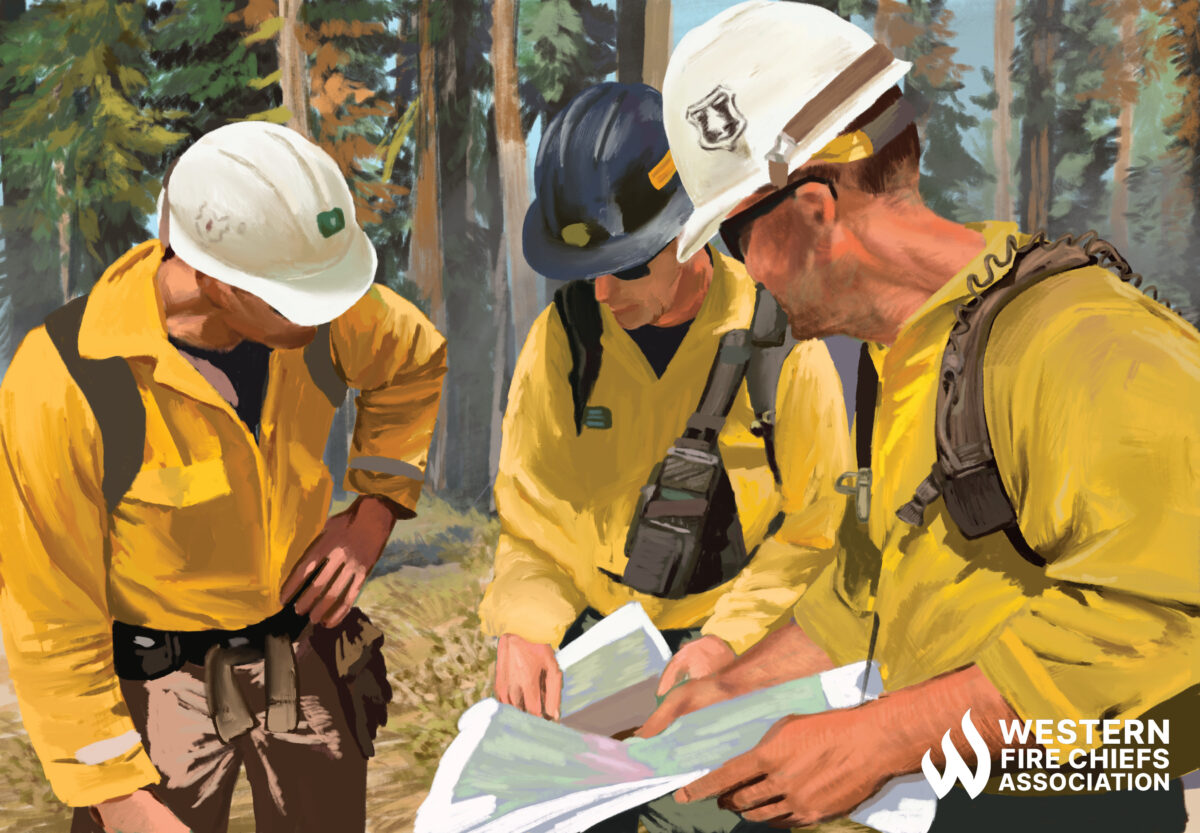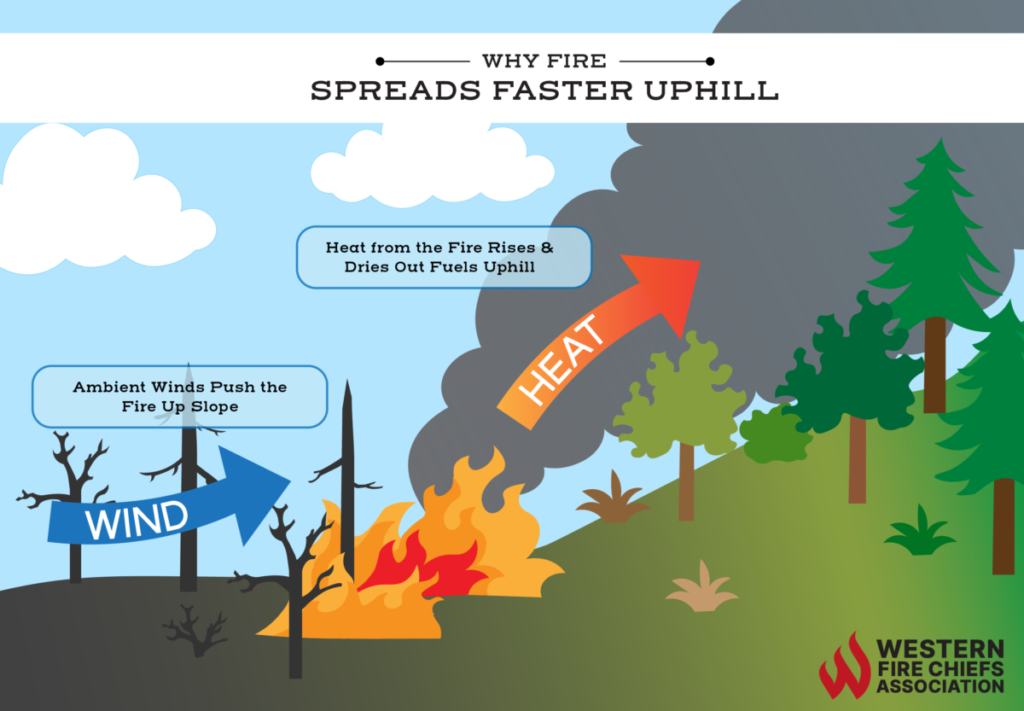Fire Pit Safety Tips
Stay safe around the campfire with tips from the Western Fire Chiefs Association. Learn essential precautions and practices for a worry-free outdoor campfire.
Wildfire can move extremely quickly. Explore the details of how fast wildfire spreads with guidance from the Western Fire Chiefs Association (WFCA).
Published:November 1, 2022
Edited:March 4, 2024

Wildfires can move extremely quickly. Explore the details of how fast wildfire spreads with guidance from the Western Fire Chiefs Association (WFCA).
When faced with the threat of a wildfire, one of the first questions people ask is how fast it can spread. Understanding how quickly wildfire spreads can help you to prepare effectively and protect your home and community.
Wildfires spread at an average of 14.27 miles per hour.1 However, this can vary hugely depending on a number of factors, such as weather conditions, fuel type, and terrain. As a human observer, it can be very difficult to accurately estimate how fast a wildfire is encroaching, and it is common for people to overestimate the distance of a fire from their location.
To understand how a wildfire spreads, we first need to understand how it starts. For a fire to ignite, there must be three elements present; heat, fuel, and oxygen, commonly referred to as the ‘fire triangle.’ These are the components to create fire, but they also dictate the speed at which fire travels and spreads.
A source of heat is required to initially ignite a fire. Heat also causes fire to spread by removing the moisture from nearby fuel and preheating it. In the case of wildfires, a source of heat can come either from natural or human causes. Lightning strikes are the most common natural cause of wildfires, while discarded cigarettes and unattended campfires are among the most common human causes. Overall, human negligence causes the vast majority of fires.
As it suggests in the name, fuel is anything that feeds a fire, including all combustible materials, natural or manufactured. The moisture content of the fuel will determine how quickly a wildfire spreads.
In short, the drier the fuel, the quicker the spread. Other factors such as the size and shape, the quantity, and its arrangement across the landscape also affect the speed at which the fire moves.2 Most common sources of wildfire fuel include dry plant materials, such as dead leaves, vegetation, trees and grasses, and fallen pine needles. The more these combustible materials pile up, the higher the chances of a devastating wildfire.3 Fuel management in areas vulnerable to wildfire can significantly help wildfire suppression.
Oxygen is the third component of the fire triangle. While controlling fuel and heat sources is possible, controlling the oxygen for wildfires is not.
Weather plays an integral role in the speed at which a wildfire spreads, and wildfire season is largely dictated by weather. Long periods of drought often result in more wildfires while increased rainfall means fewer wildfires.
High temperatures cause more evaporation, meaning that the environment becomes drier, creating fuel for wildfires. Therefore, extended periods of hot, dry weather cause more severe wildfires. As temperatures continue to rise due to climate change, so does the threat of larger, more frequent wildfires.
If hot temperatures dry out the fuel, moisture does the opposite. The level of moisture, whether it is in the form of rainfall, humidity, or the levels of moisture in the soil, can affect how quickly a fire spreads. High levels of moisture deter wildfires from spreading because it makes the fuel much less combustible. Lakes and rivers can also halt the spread of wildfires.
Wind has one of the largest (and most unpredictable) impacts on how quickly a wildfire spreads. Winds supply the fire with extra oxygen, dry out potential fuels, and push the fire across the land.4 The speed of the wind has a direct correlation to the speed of a fire’s spread – the stronger the wind, the faster the fire grows. It can also throw embers into the air, creating additional fires, or thrust the fire upwards, causing the tree canopy to burn – otherwise known as a crown fire.

Finally, it is important to recognize that the topography (or lay of the land) can also influence wildfire behavior. Fires tend to spread in the same direction as the ambient wind – usually uphill. Therefore, wildfire spreads more quickly uphill. This is also because the rising smoke and heat dry out the fuel further up the slope. Conversely, fires spread slower downhill because it cannot preheat the downhill fuel as effectively.
Stay safe around the campfire with tips from the Western Fire Chiefs Association. Learn essential precautions and practices for a worry-free outdoor campfire.
Discover essential firework safety tips to ensure a dazzling display without accidents. Learn how to celebrate responsibly with expert guidance from WFCA.
Explore the role of AI in wildfire prediction with guidance from the WFCA. Learn how advanced algorithms and data analytics enhance early detection and response.